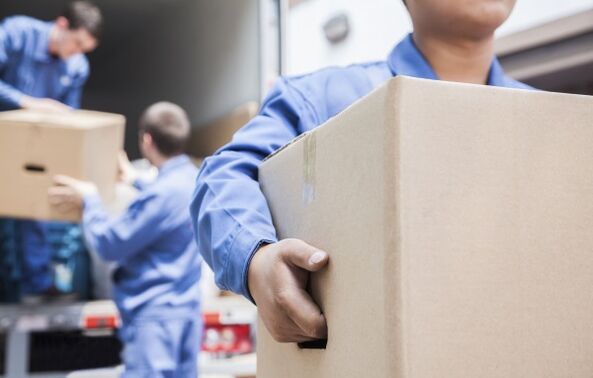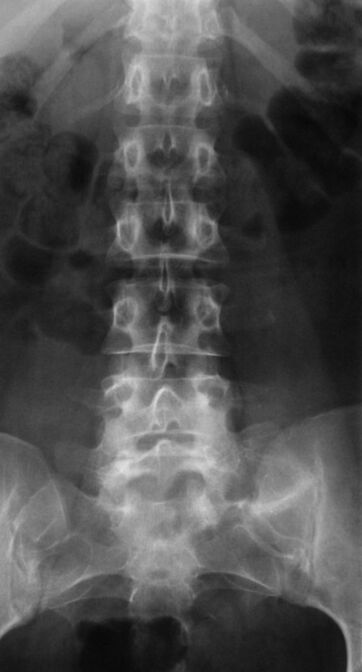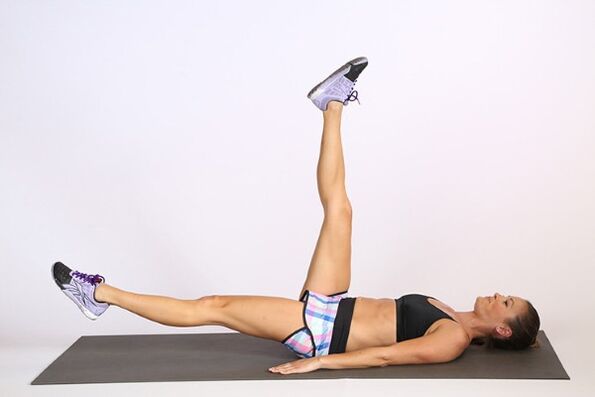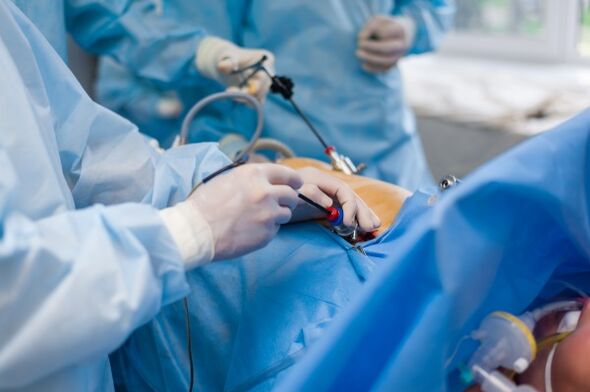Osteochondrosis of the lumbar spine is diagnosed not only in elderly patients. Recently, the pathology appears even in young people under 30 years old. Ignoring the symptoms can lead to complications. Therefore, it is necessary to know the signs of the disease in order to start treatment in time.
What is lumbar osteochondrosis?
This pathology involves an unhealthy transformation of the vertebrae located in the lumbar region. With the disease, the elasticity of the intervertebral discs decreases due to a deficiency in the supply of nutrients at the cellular level. The localization of the disease is due to the fact that this region of the spine bears the greatest load.
Reasons
Among the main factors that lead to pathology are the following:
- Genetics.Doctors warn that if one of the parents suffers from this disease, then the risk of developing lumbar osteochondrosis in the younger generation is much greater. Therefore, in such a situation, the child should engage in prevention from childhood.
- Lift weights regularly.This point applies not only to people who earn money through physical labor, but also to athletes who neglect safety precautions.
- Injuries.Any damage to the back can lead to pathology. If there are, you should consult an osteopath or neurologist. It should be noted that many people are not even aware of their injuries. For example, when braking hard while driving a car, a person may experience a displaced vertebra.
- Portliness.The spine is able to withstand loads of normal weight. If a person is overweight, the lumbar region of this organ can be deformed.
- Bad posture.The curvature of the spine leads to a violation of the proportional distribution of the load, and subsequently to osteochondrosis.
- Chronic physical inactivity,lack of movement in lifestyle. Minimal physical activity leads to the fact that the spine is not loaded. At such a time, muscles and ligaments begin to weaken and blood circulation is disturbed, which causes a lack of nutrition to the intervertebral discs, which lose their elasticity over time. In this case, the entire load and weight is transferred to the discs, compressing and later forming hernias.
- Flatfeet.This pathology indicates a lack of normal shock absorption in the feet. This results in the spine having to do more work than during normal walking. Accordingly, the vertebrae wear out faster.
- Stress.The human body is designed in such a way that with any psycho-emotional stress, first of all, the neck becomes tense. This is a biological atavism. After all, when a predator attacks a mammal, it immediately grabs the neck. Chronic stress causes a reflex transition of spasm throughout the spine. Eventually, this can lead to pinched nerves, including the lumbar spine. Therefore, after stress, it is important to relieve the tension with the help of special gymnastics.
- Aggressive obstetric practice. When the labor process is stimulated, the baby goes through the path faster and can be injured as a result. This condition can occur during a C-section when the baby's head is tilted too far to the right or left side. The baby is then diagnosed with vegetative-vascular dystonia. The real cause of the pathology is usually found in adolescence.


Degrees
Osteochondrosis of the lumbar spine, the symptoms and treatment of which are described in detail in this article, has 4 stages of development. Their detailed description is presented in the table.
| Degree | Physiology | Painful sensations |
|---|---|---|
| First | The process of destroying the intervertebral discs located in this area begins. | It is expressed by burning, dull pain or tingling in the lumbar region. Sometimes the localization of unpleasant symptoms moves to the buttocks. The pain syndrome becomes more intense after physical work. |
| Second | Disks are increasingly prone to destruction, under the influence of which the distance between them is significantly reduced. At this stage, protrusions may appear. | The pain becomes a constant pain character. They can radiate to the buttocks, thighs and knees. |
| Third | The tissues in this position of the spine are completely prone to destruction. Intervertebral hernias are formed. | The pain is strong and constant. However, they do not depend on the degree of physical activity. |
| Fourth | The cartilage atrophies completely and the vertebrae begin to grow. The spine loses mobility, which leads to disability. | Unpleasant sensations may subside completely or partially. |
Diagnostics
For the correct diagnosis, doctors perform the following activities:
- Inspection.At the initial appointment, the specialist visually assesses the patient's physique, the ratio of his weight and height. In addition, the characteristics of walking, posture and performing simple exercises are studied. The skin of the back is examined for the presence of inflamed areas.
- Palpation.The doctor carefully palpates the patient's back to locate the site of tension and pain. In some cases, a special hammer is used.
- X-ray.This diagnostic method is performed in two positions, back and side. If a functional study is required, then radiation is performed in the bent and unbent state. This method of diagnosis has become widespread in the CIS countries and requires the least money. However, it does not allow identifying the pathology at an early stage of development. Additionally, X-rays are harmful types of radiation.
- The CT scan.Unlike x-ray, it makes it possible to get the best quality images. The procedure is performed using a tomograph and takes about 10 minutes. As a result, it is possible to study in detail not only the state of bone tissue, but also changes in blood vessels and nerves. The method is not suitable for pregnant and lactating women. It should be noted that, despite the possibility of receiving more detailed information, the patient shows radiation 5 times greater than the x-ray. It is recommended to carry out such an examination no more than once a year.
- Magnetic resonance imaging.It is the most informative way to diagnose. During the procedure, the patient is placed on a plane, which rolls into a special chamber, where, using magnetic waves passing through the patient's body, a detailed image of the spine is taken. The main disadvantage of this diagnosis is the need for the patient to remain in the ward for about 30 minutes. For people of a certain mental make-up, the process can be a difficult ordeal. In addition, MRI is contraindicated in patients with a pacemaker or metal parts in the body, as well as in women in early pregnancy. However, this diagnostic method has many advantages, the main one being the absence of harmful effects on the human body. The resulting images will clearly show not only changes in the vertebrae themselves, but also the direction of blood flow, the condition of nerve endings and blood vessels. Unlike previous methods of diagnosis, MRI can detect any adverse changes in the spine in the early stage of lumbar osteochondrosis.
- Blood and urine tests.These procedures should not be called fully diagnostic. They are necessary as an additional examination, which is carried out to exclude or confirm rheumatological pathologies.

Treatment
Osteochondrosis of the lumbar spine, the symptoms of which vary in degreethe development of the disease described above suggests the following treatment tactics:
- taking medicines prescribed by a doctor.
- a course of physiotherapy.
- regular performance of a specific set of exercises.
- massage.

In some cases, experts recommend surgery.
Pharmaceutical treatment
All drugs prescribed for lumbar osteochondrosis can be divided into the following groups:
- painkillers;
- Muscle relaxants;
- chondroprotectors;
- vitamins.
Drugs that perform an analgesic function can be divided into two components: hormonal and non-steroidal anti-inflammatory drugs. They are equally able to remove not only pain, but also reduce inflammation.
However, the first group of drugs is used in exceptional cases. After all, they can lead to an imbalance of the endocrine system and reduce immunity. Therefore, hormonal drugs can only be purchased by presenting a prescription at the pharmacy.
Osteochondrosis of the lumbar spine, the symptoms and treatment of which are described in detail in this article, involves the oral use or intramuscular administration of non-steroidal anti-inflammatory drugs.
However, using them for more than 3 days is not recommended. Otherwise, a side effect may occur. Then you can use various ointments and topical creams.
Oral medications are available as tablets, injections, and suppositories.
Injections are used to relieve acute inflammation and pain. It is forbidden to do them for more than 2 days.
Muscle relaxants help relax muscles. However, the danger of their use lies in the fact that this class of drugs blocks the impulse that goes from the nerve to the muscle.
It should be clarified that the motor nerve exits the spinal cord to all muscle fibers through the spine.
When you take muscle relaxants, the impulse transmission mechanism is blocked. Due to pinching and overuse in lumbar osteochondrosis, the connection between nerves and muscles is already disrupted. The use of these drugs further suppresses this system.
Taking chondroprotectors causes the restoration of cartilage tissue.
However, there is a theory that chondroprotectors are not able to restore the intervertebral discs, because they are made of fibrous tissue. In this case, the drug acts exclusively on cartilage tissue.
B vitamins are essential for the maintenance of nerve fibers.
Physiotherapy
All procedures related to physiotherapy affect the local area of the pathology, while nearby tissues and organs remain unchanged.
This includes the following methods of treating lumbar osteochondrosis:
- Electrophoresis with anesthetic.Special drugs are injected into the patient's lower back. The whole process is stimulated by an electric current.
- Ultrasound.The purpose of this treatment method is tissue micromassage. The procedure helps relieve inflammation and also relieves pain. Blood circulation improves and metabolism is activated accordingly.
- Magnetic therapy.This method involves the use of a magnetic field. There is a wide variety of devices with a similar effect, which makes it possible to use them at home.
- Vibration effect.The devices create certain vibrations in the desired area of the body.
- Relaxation therapy.The process is carried out in a special layer. The goal is to straighten the spine.
Physiotherapy
Osteochondrosis of the lumbar spine, the symptoms and treatment of which must be checked with a doctor, requires the observance of certain rules when performing exercises. The main principle is immediate cessation of actions when pain occurs. Move carefully and smoothly to avoid damage.
The cluster assumes the following algorithm:
- Lie on your back and lift your legs one at a time.
- Turn to the side with arms stretched forward. Pull your top leg back. Then turn to the other side and repeat the steps in a mirror image.
- Lie on your stomach, pull your legs and arms back at the same time.
- Get on all fours. Alternate pulling back one arm at a time.
- In the same position, pull your right arm and leg up. Then repeat the same on the left.

Massage
When performing a massage, you must adhere to the following rules:
- the energies must be directed from the upper back down.
- Massage movements can only affect the soft tissues and not the spine.
- Before the procedure, patients are advised to visit the toilet.
Massage algorithm:
- Make strokes in the right direction.
- Perform rubbing movements first with one and then with two palms. In this case, it is necessary to monitor the pressure exerted by the massage therapist on the patient's back.
- Pull gently and then squeeze the muscle tissue.
- Create vibration using your hands or a special preparation.
- Finish the process with light stroking.
Folk remedies
Traditional medicine involves the use of medicinal herbs. The main action is aimed at relieving pain.
Homemade analgesic ointment
For this recipe you will need hop cones and lard. The first component is crushed and mixed with the second.

The ointment should then sit for a while and can be rubbed into the lower back. The composition can be supplemented with chamomile if desired. It has calming properties and can relieve inflammation.
Honey and potato compress
Raw potatoes must be shredded with a grater. Then mix the ingredients in equal proportions. The resulting mass should be distributed over the affected area of the back. It is recommended that the patient remain in this position for several hours and then rinse everything thoroughly. This compression temporarily relieves the patient's condition.
Ginger Pain Relief Ointment
Grate equal amounts of ginger and garlic on the fine grater. Then you need to add a small amount of butter. Mix everything well and rub on the lower back. The ointment should be prepared immediately before use.
Alcoholic tincture of lilac
Pour a small handful of lilac flowers into a quart glass jar. Then fill the container up to the neck with vodka, alcohol or moonshine. The jar should be tightly closed with a lid and left in a cool, dark place. After a week and a half, the product is ready for use.

In this case, you do not need to pass the tincture through a filter. You can rub your back with the resulting product. However, the dosage should be minimal. If after use the product is stored in the same way as during infusion, then it can be used for a whole year.
Herbal baths
Osteochondrosis of the lumbar spine, the symptoms and treatment of which can be studied in this article, is often accompanied by severe pain. You can eliminate it with a bath. The warm water helps to relax the soft tissues, the spasm is relieved and the pain subsides for a while.
In some cases, experts recommend using opposite temperatures to relieve inflammation. It should be noted that taking hot baths accelerates metabolic processes in the body. Another advantage of this method of treating pathology is the possibility of using it at home. In addition, the procedure helps to relieve nervous psycho-emotional tension.
You can increase the effectiveness with the help of herbal baths, among which the following should be noted:
- Coniferous.It is better to use needles from 3 trees - pine, fir and cedar. You can also add cones. About 5 handfuls of collected material should be boiled for about 15 minutes. Then, without opening the lid, leave it for 2 hours. Then pass the broth through a strainer and pour it into the tub.
- Chamomile.For this recipe it is not necessary to use fresh flowers, you can use a ready-made pharmacy mixture. A glass of chamomile should be filled with water and heated over low heat.
 You can not boil the decoction. When the maximum temperature is reached, the heating must be switched off. Without opening the lid, let it boil for another 3 hours and then you can use the composition. Such a bath will be useful not only for osteochondrosis, but also in the presence of redness and inflammatory processes on the skin.
You can not boil the decoction. When the maximum temperature is reached, the heating must be switched off. Without opening the lid, let it boil for another 3 hours and then you can use the composition. Such a bath will be useful not only for osteochondrosis, but also in the presence of redness and inflammatory processes on the skin. - Juniper.Boil several handfuls of the mixture for about 20 minutes. Then the broth must be passed through a filter. In this case, you do not need to wait until the composition has completely cooled, you can immediately pour it into the bath. This process brings with it an additional aromatherapy effect, which helps relieve stress and relieve insomnia.
After taking any of the above baths, you should lie down for about an hour. It is best to do the procedure before going to bed at night.
Surgery
Despite the fact that the disease can be effectively treated with conservative treatment, in some cases it is recommended that the patient undergo surgery. It is important to note that it must be carried out in a timely manner. After all, sometimes it happens that a person becomes disabled only because he did not consult a doctor in time for complications.
The following indications are required for surgery:
- prolonged two-month pain, which is eliminated with the help of non-steroidal drugs.
- progressive problems with motor function.
There are the following types of operations performed for lumbar osteochondrosis:
- Discectomy.Represents a replacement disk. It can be partial or full.
- Dissection.During the operation, part of the damaged tissue is removed. The operation is performed with local anesthesia.
- Laminotomy.Surgeons partially remove the osteophytes.
- Osteectomy.The operation aims to remove the joint. It is done under general anesthesia.
- Laminectomy.This surgery is performed to remove part of the spine. At the same time, the rest of the parts are fixed.

What to do during an outbreak
During an outbreak of the disease, it is best to adhere to the following recommendations:
- prefer hard chairs to soft ones.
- sleep on an orthopedic mattress.
- Avoid lifting heavy weights.
- you change the position of your body every quarter of an hour.
- have a massage.

Complications
Lack of treatment for lumbar osteochondrosis can lead to changes in the normal position of the disc. A hernia forms between the 5th vertebra and the sacrum. In addition, this pathology disrupts blood circulation in the pelvis. In men, this leads to erectile dysfunction and possibly impotence.

For women, the disease threatens problems in the reproductive system. However, the most serious complication is disability, which begins with a gradual impairment of motor activity.
Osteochondrosis of the lumbar spine has characteristic symptoms. The above complications show that it is dangerous to ignore them. After all, modern medicine offers a wide variety of treatment options that give effective results.
































